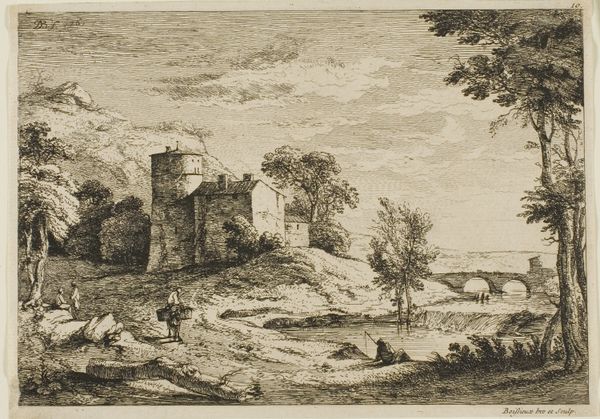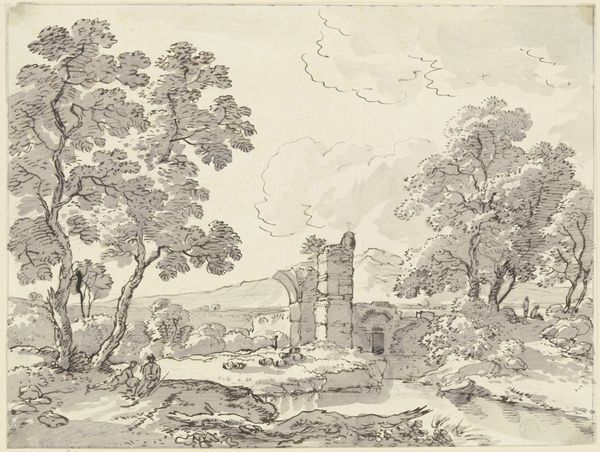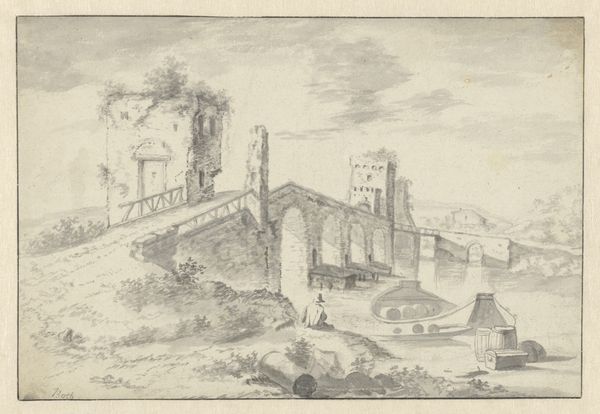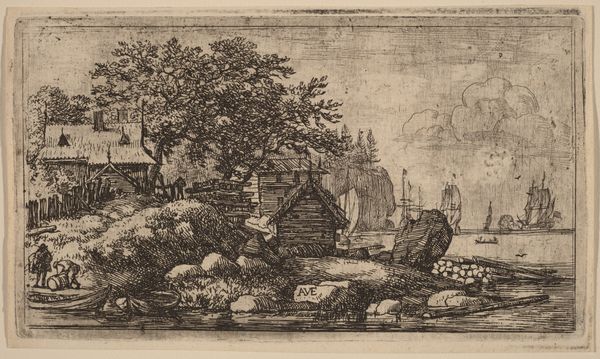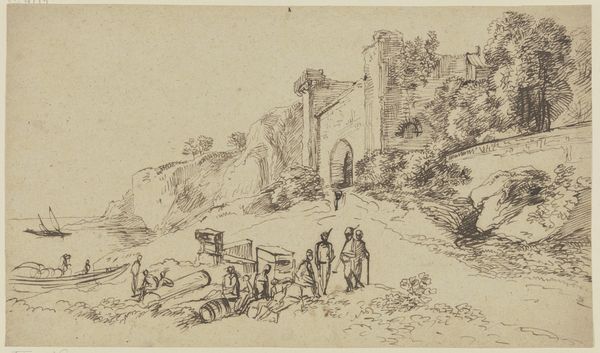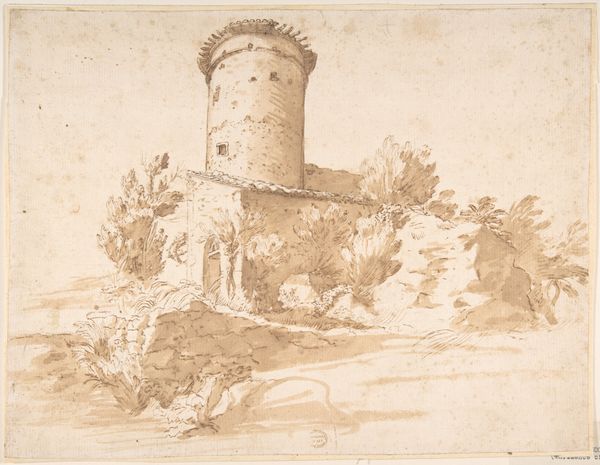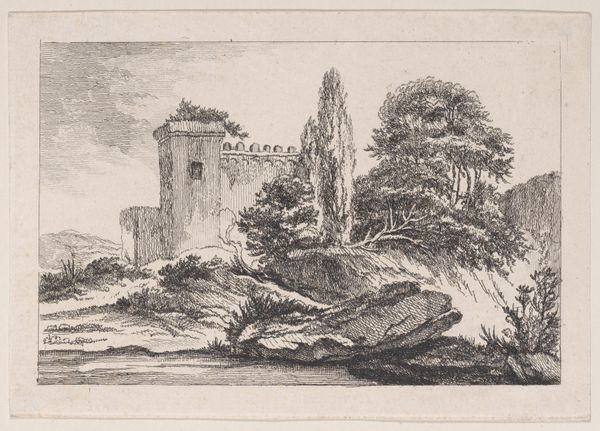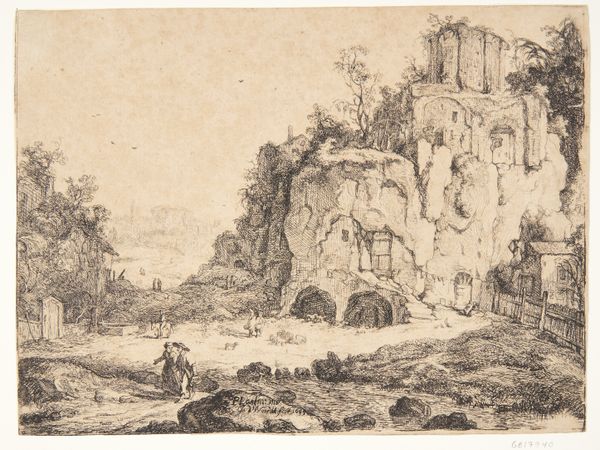
Runder Turm und Ruinen bei einer Brücke, im Vordergrund drei Wäscherinnen
0:00
0:00
drawing, pencil, chalk, architecture
#
drawing
#
baroque
#
pen drawing
#
landscape
#
figuration
#
pencil
#
chalk
#
architecture
Copyright: Public Domain
Curator: Welcome. Here we have a piece titled "Runder Turm und Ruinen bei einer Brücke, im Vordergrund drei Wäscherinnen" by Friedrich Wilhelm Hirt. It's currently held in the Städel Museum's collection. Editor: The first thing I notice is the contrast between the solid architectural forms and the loose rendering of the foliage, there is a strong use of line, but also chalk, you can really see it describing the hill on the right. Curator: Hirt was working during a period where landscape was not only a backdrop, but started gaining recognition as a respectable subject for art. This drawing presents an interesting combination of that interest with architectural ruins. There’s this idealizing look to this sort of representation of labor by the water. Editor: Yes, but consider how labor is shown in this context; these aren’t allegorical figures, the focus seems less on romanticizing a certain lifestyle and more on the materiality of their work within the physical setting. Think of the chalk as earth in this case, very similar to that which composes the landscape of the foreground. Curator: That’s a very compelling way to look at it. These washerwomen also help add a sense of scale to the composition; the tower seems enormous. This period witnesses growing social stratification, and images are consciously—or unconsciously—reflecting and shaping these norms. Are we looking at an implied social commentary through landscape? Editor: Perhaps. I lean towards emphasizing the means and methods here. What about the material conditions that would even make this scene possible? Where did Hirt get his pencils and paper, who processed the material to get it into the final form? Those sorts of questions always resonate for me. It seems a kind of romantic exercise now, using paper to record land use that is already an expression of material activity. Curator: It’s easy to romanticize decay when one is distant from material concerns. It is equally compelling that a drawing becomes a form of production in and of itself, an active re-imagining of space as much as a representation. Editor: True enough. Thinking about it that way gives me a renewed perspective. Curator: Likewise! Looking closely helps bridge historical and material viewpoints of a complex image, and that always offers rich context.
Comments
No comments
Be the first to comment and join the conversation on the ultimate creative platform.

